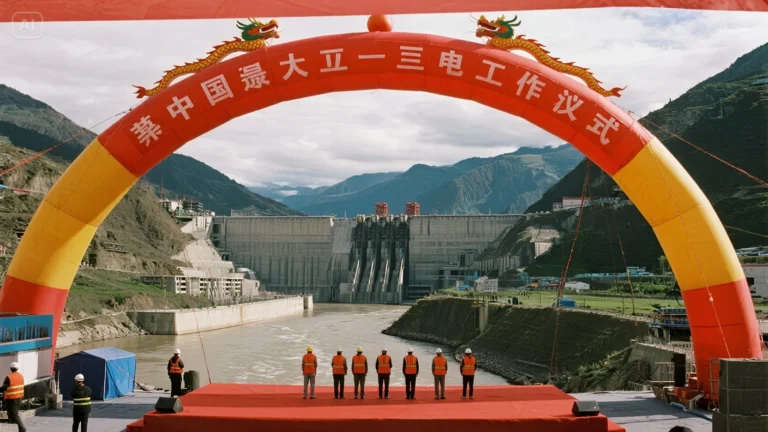Insecurity Flowing from Afghanistan
 Insecurity Flowing from Afghanistan
Insecurity Flowing from AfghanistanAfghanistan currently represents a critical intersection of terrorism, radical ideology, and drug trafficking, significantly undermining both regional and global security. Since the Taliban reestablished authority in 2021, the nation has deteriorated into a haven for extreme groups and illicit organizations. Contrary to previous expectations that the Taliban would dissociate from foreign terrorist groups and fulfill their commitments to combat narcotics manufacturing, the situation has proven to be significantly more dismal. Under the Taliban’s government, Afghanistan has transformed into a hub for ideologically motivated violence and a focal point for a transnational criminal economy, exporting both terrorism and narcotics beyond its boundaries.
The most concerning aspect of this security problem is the flourishing terrorism ecosystem in Afghanistan. Organizations like Al-Qaeda, Tehrik-i-Taliban Pakistan (TTP), and the Islamic State Khorasan Province (ISKP) function either overtly or clandestinely, frequently collaborating while also experiencing intermittent competition. Al-Qaeda, which was previously diminished after 9/11, has discovered conducive conditions in the northern provinces of Afghanistan to reorganize and restore its operational capabilities. Intelligence sources suggest the group is revitalizing its pre-9/11 framework to reestablish the global export of Islamist bloodshed. The TTP has intensified its cross-border assaults into Pakistan, resulting in a remarkable death toll over 2,500 individuals in 2024 alone. This intensified attack has been enabled by the group’s refuge within Afghan territory under Taliban protection. The ISKP, despite its ideological opposition to both the Taliban and Al-Qaeda, has swiftly augmented its capabilities. It currently harbors aspirations extending from Central Asia to Europe and the Middle East, utilizing Afghan territory to execute, strategize, and fund lethal activities. These entities, despite frequent conflicts, constitute a sophisticated “terror ecosystem” nourished by shared resources, narcotics revenue, and the ideological sanctuary provided by Taliban-controlled Afghanistan.
The terror matrix is further enhanced by a revitalized narcotics economy, with Afghanistan reaffirming its status as the world’s foremost opium supplier. Notwithstanding a temporary prohibition on opium declared by the Taliban, 2024 experienced a significant 30% surge in opium output, so nullifying prior reductions. The price of opium surged from $75/kg to an extraordinary $750/kg after the prohibition, favoring smugglers, traffickers, and funders of terrorism. This pricing manipulation indicates a calculated strategy by the Taliban to centralize and regulate drug income rather than eliminating the trade. Badakhshan province currently constitutes 59% of the country’s opium production, a clear indication of the Taliban’s transition in drugs cultivation to their most fortified strongholds. Drug trafficking continues to be a crucial source of funding for terrorists, generating revenue that can exceed lawful crops by a factor of 60, so reinforcing the connection between criminal enterprises and violent extremism.
The global consequences of this dual crises are significant. Afghanistan is not only a regional challenge but also a worldwide catalyst for instability. Approximately 80% of the world’s opium originates from its territory, transported through adjacent countries such as Iran and into Europe and Asia. These trafficking networks also serve as conduits for the transfer of weaponry, radical propaganda, and trained militants. Regions governed by the Taliban contain not just opium cultivation sites but also training facilities, financial centers, and logistical bases for terrorism. These infrastructure components facilitate the global dissemination of operational cells and extremist ideas. The geography of Afghanistan, coupled with the Taliban’s intentional inaction and involvement, has converted the nation into a catalyst for global instability. Notwithstanding public claims, the Taliban have demonstrated no authentic intention to dismantle the jihadist infrastructure; rather, they leverage it as a strategic asset in their negotiations with regional countries and internal factions.
The global community, especially via the United Nations, has acknowledged these threats; yet, the enforcement mechanisms are still insufficient. The UN Security Council Resolutions 1267, 1989, and 2253 have imposed sanctions on enterprises associated with the Taliban and extremist organizations such as Al-Qaeda, ISKP, and TTP. The UN Sanctions Monitoring Team has consistently highlighted the ongoing presence of Al-Qaeda in Afghanistan and its close connections with the Taliban’s Haqqani Network. Likewise, ISKP’s expanding financial and operational networks have been seen as pressing dangers, particularly to Western countries and South Asia. Nevertheless, despite these cautions and initiatives, implementation on the ground is virtually absent. The Taliban’s systematic hindrance of international observers and their stringent control over information render the imposition of genuine accountability nearly impossible.
The present course of Afghanistan is not merely a perpetuation of historical instability but a perilously quickening spiral that threatens to provoke disastrous repercussions extending well beyond its frontiers. The reinstatement of a terror-narcotics connection under Taliban governance has worldwide ramifications. Terrorist organizations have reconstituted, drug cartels have revitalized, and a nation previously considered pacified has resurfaced as a principal supplier of disorder. This is not a regional insurgency; it is a transnational crisis with the potential to result in mass-casualty incidents comparable to or surpassing the devastation of 9/11. The era of complacency has concluded. The international community must acknowledge Afghanistan’s status as a geopolitical threat and implement a unified, rapid strategy to contain and remove this danger before the repercussions become irrevocable.













